Synopsis: The old walk crew, ex-colleagues from DCC, gathered once again for this Tarka Line walk. Inspired by the book Tarka Line Walks. A Saxon invasion and a listed pig sty to intrigue.
This is walk ‘Yeoford’ (p.12) in the book More Tarka Line Walks by Peter Craske. This book followed upon an earlier publication, not surprisingly titled Tarka Line Walks. I believe that both of these books are now superseded by one bumper book called Tarka Line Walks. I don’t have a copy of this new book, but I do know that this walk today can be found in this new edition. The walks from this book are intended to be accessed from the Tarka Line that connects Barnstaple and Exeter. To see other walks from this book that I have completed, use the link under Tags to the right.
The walks described in More Tarka Line Walks are well written up, with an interesting narrative describing what will be seen during the walk, and adequate walking directions to navigate the route. An Ordnance Survey 1/25k map showing the walk route is printed for each of the walks, making it possible to navigate the route without a separate map, although having one’s own map is always advisable.
This was another of our ‘ex-colleagues’ walks (we did one last July). I set off on the train from Digby & Sowton railway station with Jenny, Mark boarded at Exeter Central, and Gill and Jeff met us in Yeoford. Our way took us back through Yeoford village, looking very sleepy, past the Mare and Foal (closed Mondays, rather frustratingly!), and then out along country lanes.

We suspected we were looking out to Castle Down, the site of the hill fort that saw action in 661, when the Saxons invaded. It was easy to imagine the Saxon hoard, said to be as many as 5,000, marching up the valley in the direction of the Dumnonian stronghold. The Saxons did defeat the Dumnonian army and take the hill fort, but not for long, as reinforcements from Wales came to the rescue and drove the Saxons (sometimes referred to as ‘the English invaders’, since they had invaded this country from the Continent) back (see also: Yeoford & Posbury 002 (with landscape markers)).
The lane we walked was relatively busy with car traffic, but it wasn’t long before we were branching right, and as soon as we did, our way became a lot quieter. Soon we were on a dirt track ascending gradually the hill slope. To our left, over high hedges, we could just make out what is known as Posbury Clump, a clump of trees on a little hillock. We approached a small farm building, Cholwell, and a dog came out to greet us. A lady came out to call the dog back, and spoke to us briefly.

The lady with the dog that we met in the track by the house named Cholwell, in the process of being modernised, spoke of the chapel of St Luke's that we were approaching. She said that it was in the ownership of the Downes family. I believe this would be the Downes family that own a large 'Palladium' manor near Crediton. Reference to this link is contained in the article in Wikipedia for Posbury. Here it is stated that the land, chapel and [maintenance] fund was put into the hands of trustees, one of whom was James Wentworth Buller (1798-1865), of Downes House.
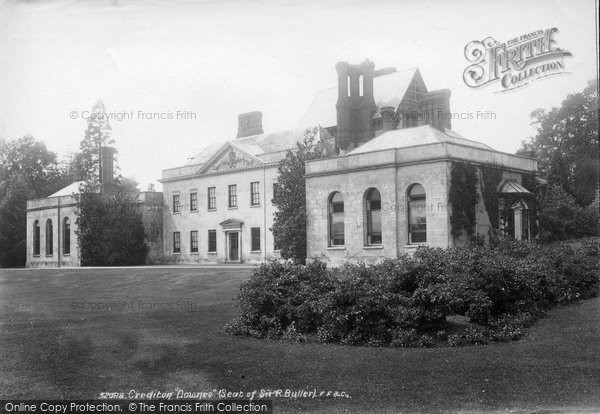
Examining the web site for St Luke's, I noted that there was a forthcoming summer fair event, that was advertised as being held at Downes House.
There is a fine photograph of Downes House (Grade II* Listed) on the St Luke's Country Fair event page …
See location of Downes on OS Leisure Map on Bing Maps
At the top of the dirt track the way forks in several directions. It is at this fork in the roads that St Luke’s Chapel is to be found. We entered the gate and discovered open grass and a bench, an ideal stop for our lunch. Although rather early in our walk, as our planned walk was relatively short, we chose to lunch here.
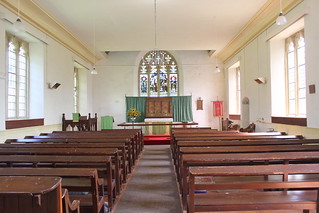
St Luke's Chapel is small, simple, some might say stark, and rather quaint. There is nothing of any great antiquity within the chapel, nor do there appear to be any monuments within. The interior is very light and airy and seemingly in a very good state of repair. There are a small number of gravestones in the chapel grounds.

What did catch my eye was the carvings in the wooden reredos. This was a simple design, with the symbol of Alpha and Omega on one side, and, most curiously, a Chi Rho symbol on the other. I notice that in some instances these two images can be combined to form a single symbol, so there is obviously deemed to be a strong association between these two symbols, but I know no more than this. Nor do I ever recall seeing the Chi Rho symbol in a church or chapel previous to this. My only previous direct experience of seeing this symbol was finding it on the side of a piece of Roman pottery to be found in the Royal Albert Memorial Museum in Exeter. I’ve included my photo of the Chi Rho on a sherd of pottery held at the Royal Albert Memorial Museum (RAMM), Exeter.
An intriguing piece of associated history is that the school, which once stood opposite the chapel, was established by Charlotte Mordaunt (1777-1847), wife of Richard Hippisley Tuckfield, and her main interest was in the teaching of deaf and dumb children. This was the founding movement of what was the precursor to the Royal West of England School for the Deaf, now named the Exeter Deaf Academy, that still functions in this role in Exeter to this day.
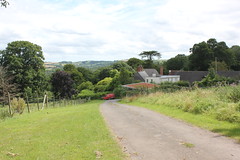
Originally named Posbury House, now known as The Community of the Franciscan Servants of Jesus and Mary (rather a mouthful), and is home to a nunnery, originally founded in London by Grace Emily Costin. It moved to the Isle of Wight in 1937, but moved to here, Posbury House, to escape the danger of enemy bombardment during World War II. We did walk down the drive to the nunnery, but no nuns were in sight (possibly they were in their bunker). It has to be said that the location of the nunnery was most idyllic, seated in the neck of a valley, with St Luke's Chapel clearly visible on the far side.

Our walk then took us up the southern slope of Castle Down, which gave us a good impression of the view the Dumnonians would have had of the invading English, but gave us no sighting of the hill fort itself. We backtracked and circled around to the north side of the hill fort and this time we could clearly see the ramparts from the lane. The hill fort being on private land, it is not possible to approach it closely. Although only a sparse sighting of the hill fort, it was good to see it, and experience its commanding position.
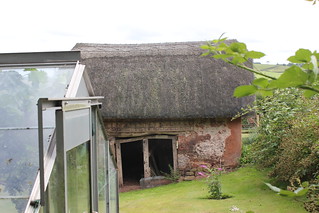
We dropped down off Posbury Hill crossed an old bridge and entered the hamlet of Neopardy (nice name that). From the lane we could see the most attractive Neopardy Cottages (Grade II Listed), about as idyllic a scene as you'll come across anywhere in Devon. And then, turning off left from the lane, we entered a track, which passed a rather intriguing piece of country architecture, a listed pig house (Grade II Listed). Now, just what would the little pigs make of that. And it made me wonder, if I huffed and I puffed, could I blow the house down? Probably not.
Climbing over a stile, we found ourselves in a wheat field. We made our way around the perimeter of the field to a point where it wasn’t exactly plain which was the correct way forward. It appeared as if crops had been planted across the public right of way. We chose a simple tactic of heading for a gate back onto the lane, as that was where we needed to be. At this point we were backtracking our way to Yeoford.
At the railway station we briefly inspected the ‘library’ to be found in one of the buildings on the platform. We’d noted this on a previous visit. Books seem to be kept here, presumably so that travellers can wile away their time until their train arrives.
At this point, Mark, who wasn’t joining us for an evening meal, was to catch the train back to Exeter. The rest of us, on finding the village pub was to be closed on our walk day, opted for an alternative plan of retreating to Crediton. Jeff and Gill kindly obliged with lifts in their cars.
That evening Sarah, another ex-colleague of ours, joined us for supper at the Red Deer. It was the first time that I’d eaten there. I, and the others, all agreed, it was the perfect venue for an end-of-walk meal.
Jenny and I needed to catch the train back to Exeter, so, after our meal, we made our way to Crediton railway station. The others were making their own way in their cars.
It had been an excellent walk, with lots of interest, on a day that was perfect for walking. It had been dry, warm but not too hot, and a cool breeze throughout the day kept us fresh. And of course it was good to catch up with old friends and gossip along the way.
Highly incidental, and purely for amusement, here are some of the news stories we chatted about during our circumambulation :
• Spam email levels at 12-year low
• Obama's clean energy plan expected to boost renewables
• Smoking 'may play schizophrenia role'
I referred to the book Battlefield Walks Devon, by Rupert Matthews, for historical information about the Battle of Posbury of 661 (p.22). This book is very good at setting the scene of the battles it describes, providing historical facts about each battle, and the conditions in which the battles were fought. It also places the battle within the landscape through which the walks are based, which I find helps me visualise how each battle unfolded in the terrain that is viewed whilst on the trail. It describes the armour worn, weapons used and the tactics deployed at each battle.
The book is available to purchase on Amazon. Rupert Matthews has produced a short video which describes the content of this book, which can be viewed on YouTube.
See this and other books by Rupert Matthews on his web site. A summary of the walk Posbury 661 from Battlefield Devon can be viewed as a blog post by Rupert Matthews.
But, perhaps the last word, should be given to Æthelweard's Anglo-Saxon Chronicles for 661 which “describe Cenwalh of Wessex fighting a battle at Posentesburh.” This, one can assume, is the origin of much of what we know today about Posbury 661.
Walk Statistics:
Total Distance: 12.1 km / 7.5 miles
Moving Time: 3hrs 28min
Stopped Time: 59min
Total Ascent: 317 metres
Maximum Elevation: 180 metres
Buses: (none)
Trains: (Digby & Sowton to Yeoford) – Off-peak day return: £6.30

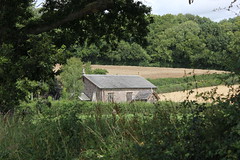

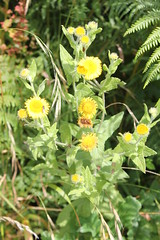
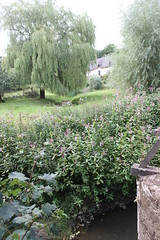

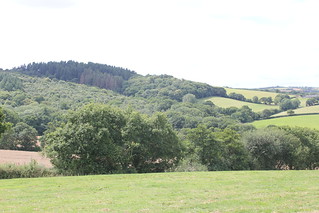



No comments:
Post a Comment